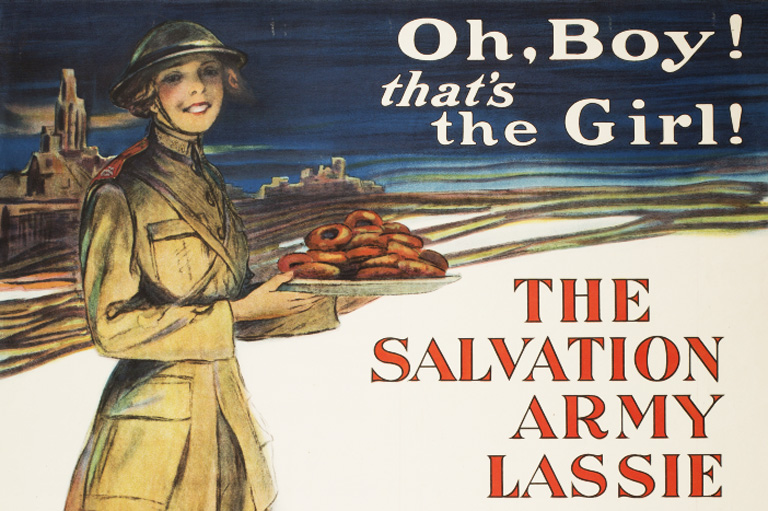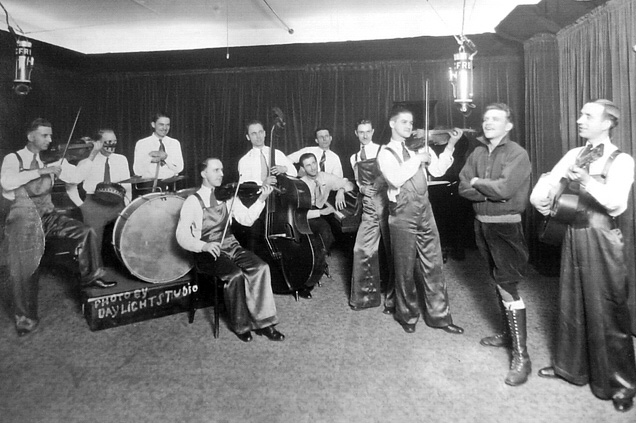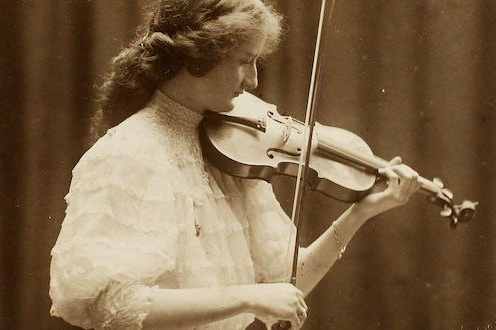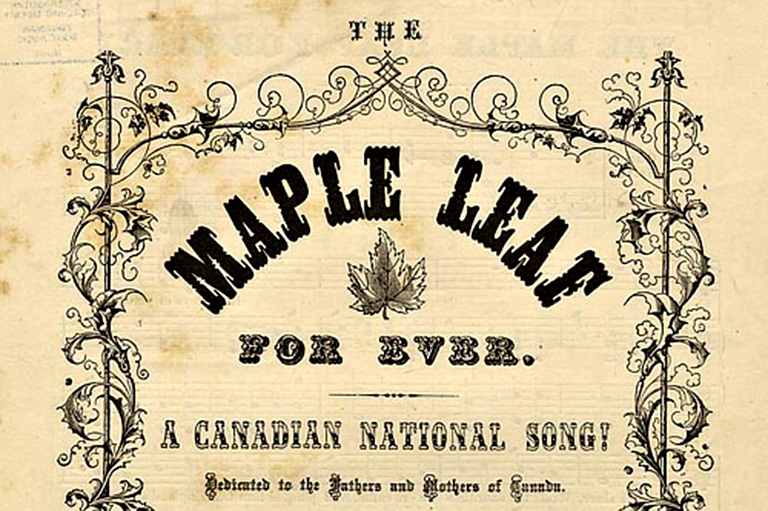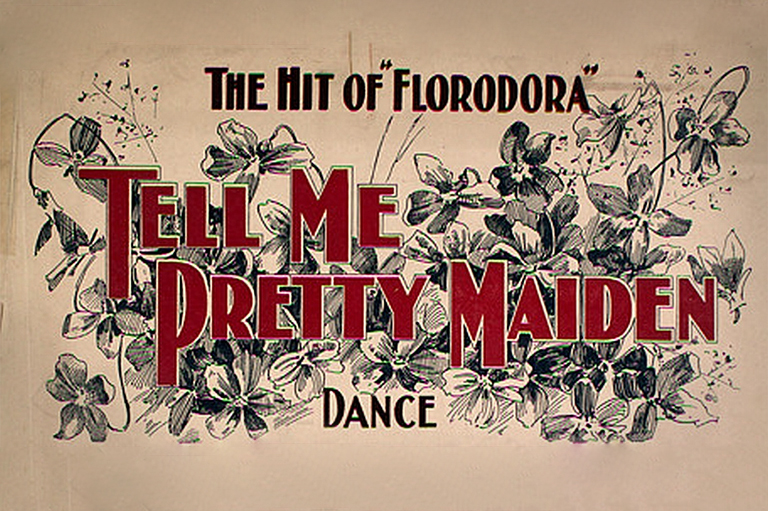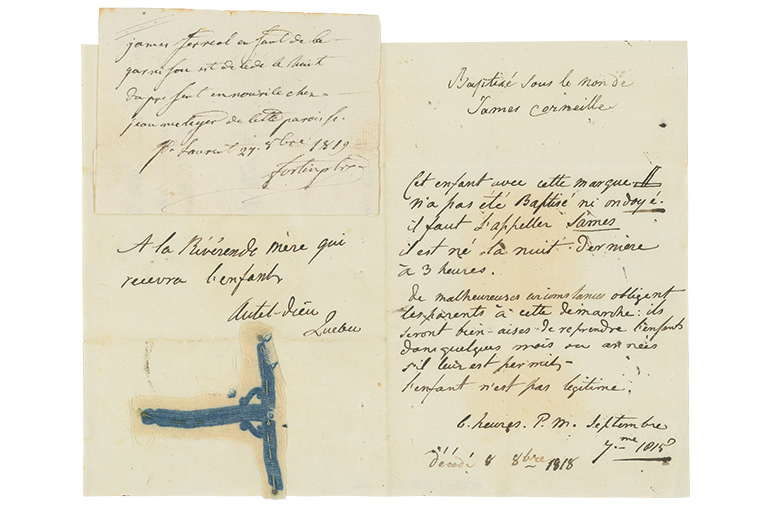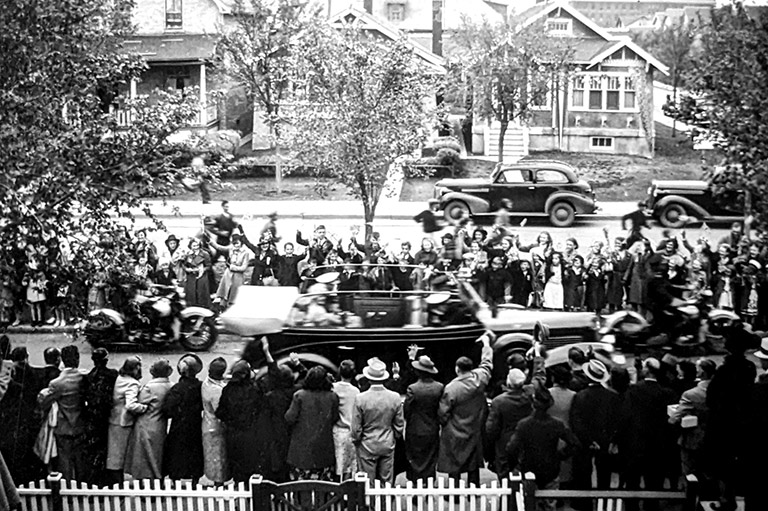Discover a wealth of interesting, entertaining and informative stories in each issue, delivered to you six times per year.
Songs For Little People & My Mother Bids Me Bind My Hair
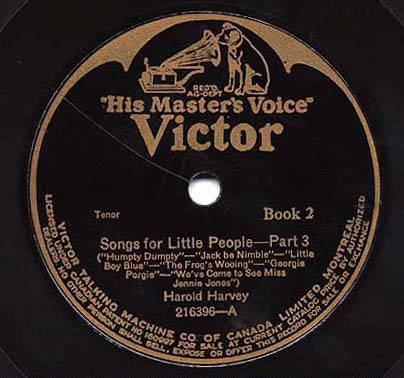
Mark: Rachelle, the historical recording we are about to hear is of a little-known type: early recordings for children. Can you tell us a bit about that?
Rachelle: In fact, it was exceedingly difficult to find more than snippets of information about trends in children’s recordings from this period.
I don’t think that children’s entertainment was necessarily a great priority for the recording industry in the earlier years! The 1920s, of course, antedate the stars of music for children’s entertainment like Raffi or Sharon, Lois and Bram.
But I think I can safely say, from what I know about our collections at Library and Archives Canada and as a music historian, that children’s recordings constituted a fraction of the industry of the time, and that the audience for these recordings would not have been as democratic as it is today: after all, we might assume that record playing technology and indeed, leisure time were not as accessible to everyone back then.
I just would like to mention, however, one aspect that can possibly be gleaned from actually listening to the recording. Although the artist is American and the recordings were made in Canada, the presentation, the pronunciation of the words, and the content are thoroughly English, not North American.
And if you think about the period after the First World War and what was going on in institutions and schools — and this has been analyzed by historians — a kind of rapprochement was intensifying between Great Britain and North America.
Not that it didn’t exist before: we all know that many Canadians and Americans have British origins. But these recordings do not account for the many North American variants of the same nursery rhymes that were circulating in this period.
Shakespeare’s works were being ramped up and more actively promoted in North America’s education systems than before, and this also has been noted by cultural historians and related to subsequent development of political alliances. Could it be that these recordings were, on a certain level, part of that movement? Maybe.
But apart from these theories, suffice to say that Songs for Little People are real vintage 20’s recordings obviously produced with care, with orchestral accompaniment, and probably destined to an upper middle class kid’s audience whose parents saw some merit in perpetuating English nursery-rhyme traditions.
And the very fine tenor on these recordings, Lewis James, is an interesting, if little-known artist.
Which begs the question: who was Lewis James and what other recordings did he make?
Lewis James was born in Dexter, Michigan in 1892. He was a member of hugely popular groups like The Shannon Four, The Revelers, and The Criterion Trio. He had many Top Ten hits during that time, including “My Baby Boy,” “Till We Meet Again,” “What’ll I Do,” among others. He died in 1959.
One of his groups, The Revelers were stars on radio and in vaudeville, as well as in the recording studio. They had a recording contract with Victor, the same label as Songs for Little People, but made extra money by moonlighting under pseudonyms for other labels. And the context…well, these were the “Roaring Twenties,” need I say more?
If you know the 1997 movie The Comedian Harmonists, you can relate to the sound of The Revelers. In 1927, unemployed German-Jewish actor Harry Frommermann was inspired by The Revelers to create a German group of a similar type and appeal. They attained international fame and popularity but eventually ran into trouble when the Nazis come to power, because half of the Comedian Harmonists was Jewish.
The Revelers, for their part were inducted into The Vocal Group Hall of Fame in 1999 and Lewis James with them. James also sang under the pseudonym Harold Harvey, which he used for Songs for Little People.
What about the contents of this excerpt?
It is interesting that all but one of the songs, We’ve come to see Miss Jennie Jones, feature only the first verse. My guess is, that had something to do with educating children to the tune first, and then letting them supply subsequent verses.
The history and origins of most nursery rhymes reflect events in history. Humpty Dumpty was in fact believed to be a large canon set up on a wall surrounding the town of Colchester, to defend the Royalists during the English Civil war in the seventeenth century. It fell off the wall and broke to bits, and all the King’s horses and men (the Royalists) could not repair it, and thus Colchester fell to Cromwell’s troops.
Little Boy Blue refers to an earlier time under King Henry VIII and to Cardinal Wolseley, who was known to ‘blow his horn’ in arrogance about his wealth. Jack be nimble is about the famous English pirate of the 16th century known as Black Jack, who was notorious for his ability to escape from the authorities. And so on…
So, nursery rhymes are part of a folk tradition that can include the people’s voice about political or social issues, and that is fascinating. I doubt, however, that these hidden meanings were the stuff of children’s record marketing in the 1920s!
It is fair to assume that Songs for Little People attests to the demand in Canada and in North America in general, for tools that would enable children to learn and perpetuate a much-loved cultural heritage from one of their founding communities.
Sign up for any of our newsletters and be eligible to win one of many book prizes available.
My Mother Bids Me Bind My Hair
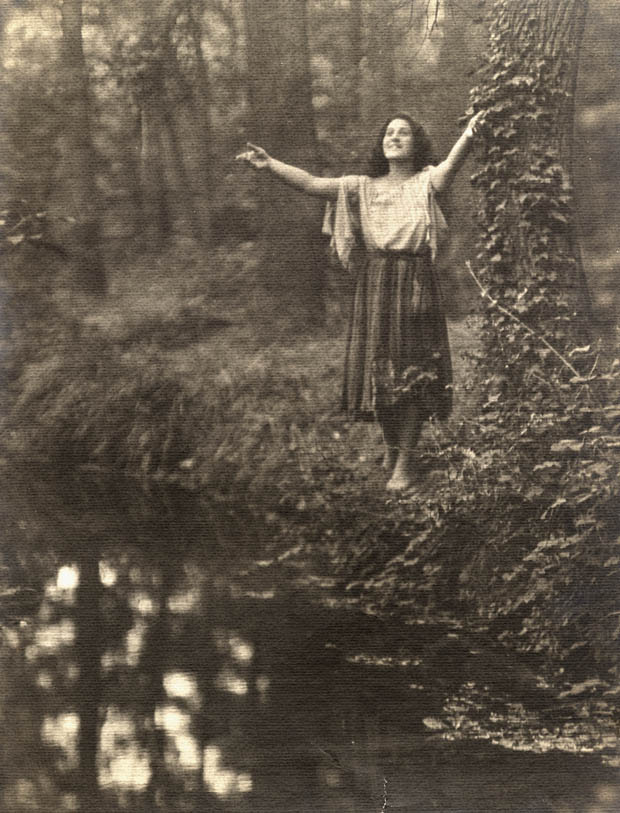
Mark: For this recording, I think we could start with the performing artist before discussing the very interesting song she recorded. Who was Sarah Fischer?
Rachelle: The quick answer to that is: Sarah Fischer was a great artist who, in my opinion, deserves to be recognized and celebrated by Canadians far and wide, not just for her artistic merits, but for her personal courage and her contribution to the advancement of music in Canada.
She was born in Paris in 1896 and came to Canada in 1909 with her mother and sister. Her father, Jacob was a hat manufacturer who had immigrated earlier.
She almost immediately began to work as an operator for the Bell Telephone Company in Montreal during the day, and in the evenings she studied music and took voice lessons. In 1917 she won the prestigious Strathcona Scholarship which enabled her to travel to London to study at the Royal College of Music. (It should be mentioned that the Strathcona Scholarship is named after Donald Smith, Lord Strathcona, whose name still graces the music building at McGill University in Montreal. The scholarship was also known as the “McGill” Scholarship.)
While still a student, she made her London debut at the Old Vic as the Countess in Mozart's The Marriage of Figaro. She sang Pamina in Mozart’s The Magic Flute on what was to be a historic moment: the first opera broadcast by the BBC from Covent Gardens. The year was 1923. Sarah Fischer accomplished all this while still a student, supporting herself through her art.
Sarah Fischer began touring Europe with the British National Opera Company in 1925, and also gave a number of recitals in London, in venues such as Wigmore Hall, Albert Hall, and Queen's Hall.
Then, in November of 1925 she joined the Opéra-Comique in Paris, and attained worldwide fame singing more than 30 leading opera roles, which is an enormous quantity of music and acting by any standards!
She had become an international star of the opera scene and also a celebrated recitalist specializing in French art song, often performing with the composers themselves at the piano. She toured extensively and made trips back to Canada on tour as well. This part of her career lasted some twenty years, and then she returned to Montreal definitively.
What made her return to Montreal? Presumably, an opera career such as Sarah Fischer’s was likely to last longer than just two decades...
Sarah Fischer began to think about returning to Canada as the Second World War progressed.
Wars are terrible for everyone, and artists are no exception: in addition to being in danger for her safety as a Jewish person, work became increasingly scarce for the same sad reason. Her father, a widower, was ill and needed her help. And she truly cared about developing opportunities for music in Canada.
Thus, in 1940, Fischer was back in Montreal, rolled up her sleeves, opened a voice studio and began an enterprising period that saw her founding the Sarah Fischer Concerts to promote established Canadian musicians and present new Canadian talent.
It was a great, an immense success, but again, it was the product of determination, personal investment, and vision. Working out of her apartment, Fischer ran all aspects of the concerts, from performers’ contracts to publicity and ticket sales.
“I give talent a public hearing,” she would say, and that vision translated into concert debuts for over 650 musicians, including contralto Maureen Forrester, composer Violet Archer, and pianists Robert Silverman and André Laplante.
In addition, she instituted the Sarah Fischer Scholarships for Canadian musicians, be they singers or instrumentalists. She was a devoted and tireless teacher, and even offered scholarships to her most promising voice students.
She explained these initiatives: “I’m thanking Canada for my scholarship — referring to the Strathcona scholarship — 55 years ago which sent me to London and opened the musical world to me.”
Among her numerous distinctions, awards, and honours, in 1967, all of her costumes from past opera performances were displayed at the Hospitality Pavilion at Montreal’s Expo 67, and her recordings were reissued on a private compilation, called Sarah Fischer, for release in Canada. Sarah Fischer died in 1975.
This aspect of her legacy lives on in the careers of the many prominent artists her initiatives helped to support, and in their own legacies.
The recording we are about to hear is of the great Sarah Fischer performing an old Scottish song set to music by Joseph Haydn. This seems like a rather interesting combination!
In spite of the scratchy-sounding piano introduction due to wear and tear on the Filmophone technology, this recording is superb. Fischer’s rich mezzo voice and expressive phrasing, as well as her impeccable diction render Haydn’s setting of Anne Hume’s text haunting and memorable.
In many interconnected ways, the song has a feminist bent, as well. It was written by a woman, Anne Hume-Hunter, who had to earn a part of her living through writing after the death of her husband, a celebrated surgeon and a friend of Joseph Haydn, the latter spending long periods of time in London where the Hume-Hunter family lived.
The song tells of a mother who bids her daughter to cheer up and have a bit of fun even if her boyfriend, whose name is Lubin, is away. “For why sit still and weep, while others dance and play?”
I can’t help thinking that Sarah Fischer would have wholeheartedly agreed.
Never one to sit still and weep, she rolled up her sleeves, as the mother instructs her daughter to do in the song, forging ahead relentlessly in her career, finding opportunities for personal independence and for nurturing expression in others, especially her fellow Canadians.
My Mother Bids Me Bind My Hair
With bands of rosy hue,
Tie up my sleeves with ribbons rare,
And lace my bodice blue.
“For why,” she cries, “sit still and weep,
While others dance and play?”
Alas! I scarce can go or creep,
While Lubin is away.
‘Tis sad to think the days are gone,
When those we love were near;
I sit upon this mossy stone,
And sigh when none can hear.
And while I spin my flaxen thread,
And sing my simple lay,
The village seems asleep or dead,
Now Lubin is away.
We hope you will help us continue to share fascinating stories about Canada’s past.
We highlight our nation’s diverse past by telling stories that illuminate the people, places, and events that unite us as Canadians, and by making those stories accessible to everyone through our free online content.
Canada’s History is a registered charity that depends on contributions from readers like you to share inspiring and informative stories with students and citizens of all ages — award-winning stories written by Canada’s top historians, authors, journalists, and history enthusiasts.
Any amount helps, or better yet, start a monthly donation today. Your support makes all the difference. Thank you!


